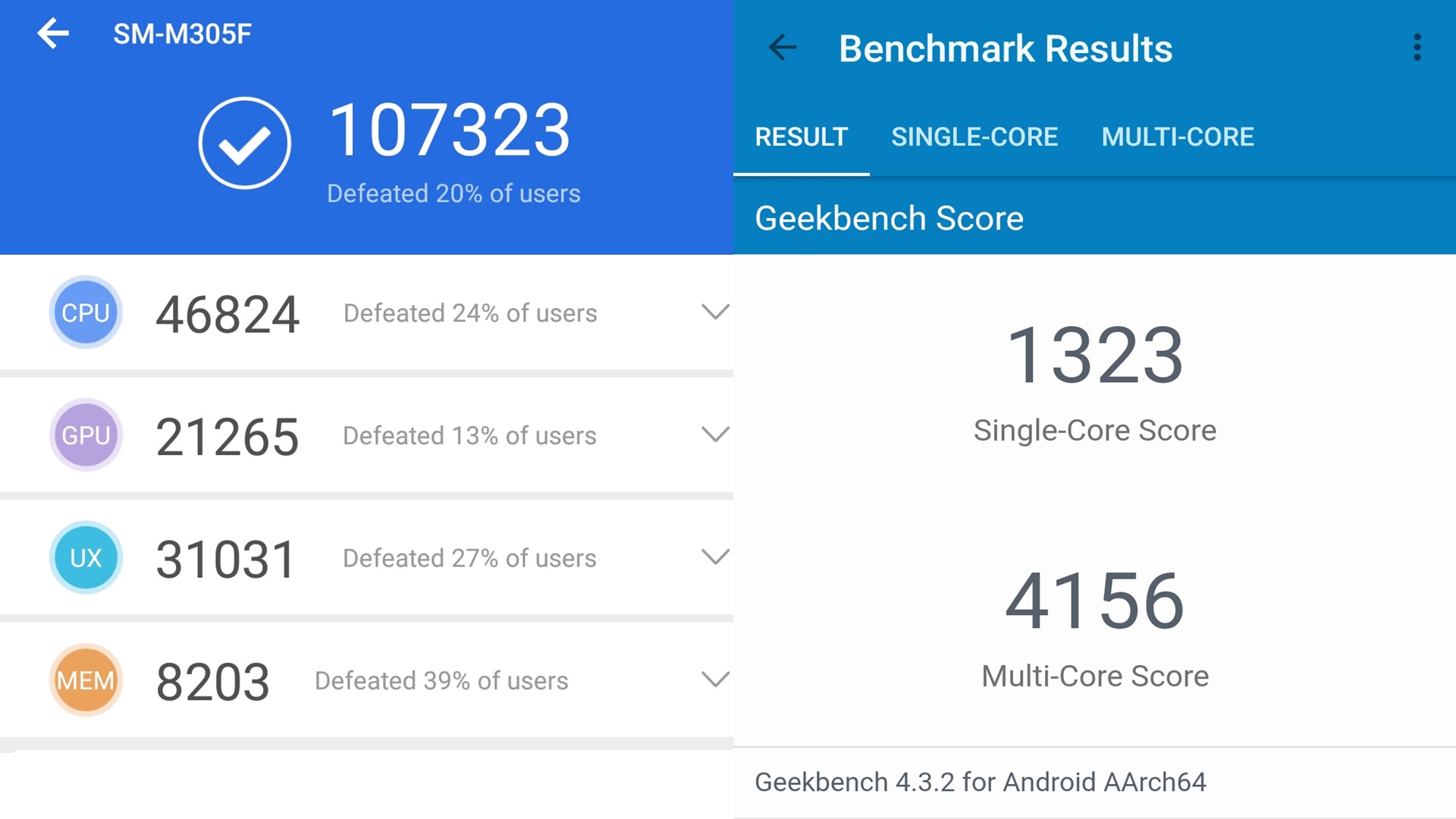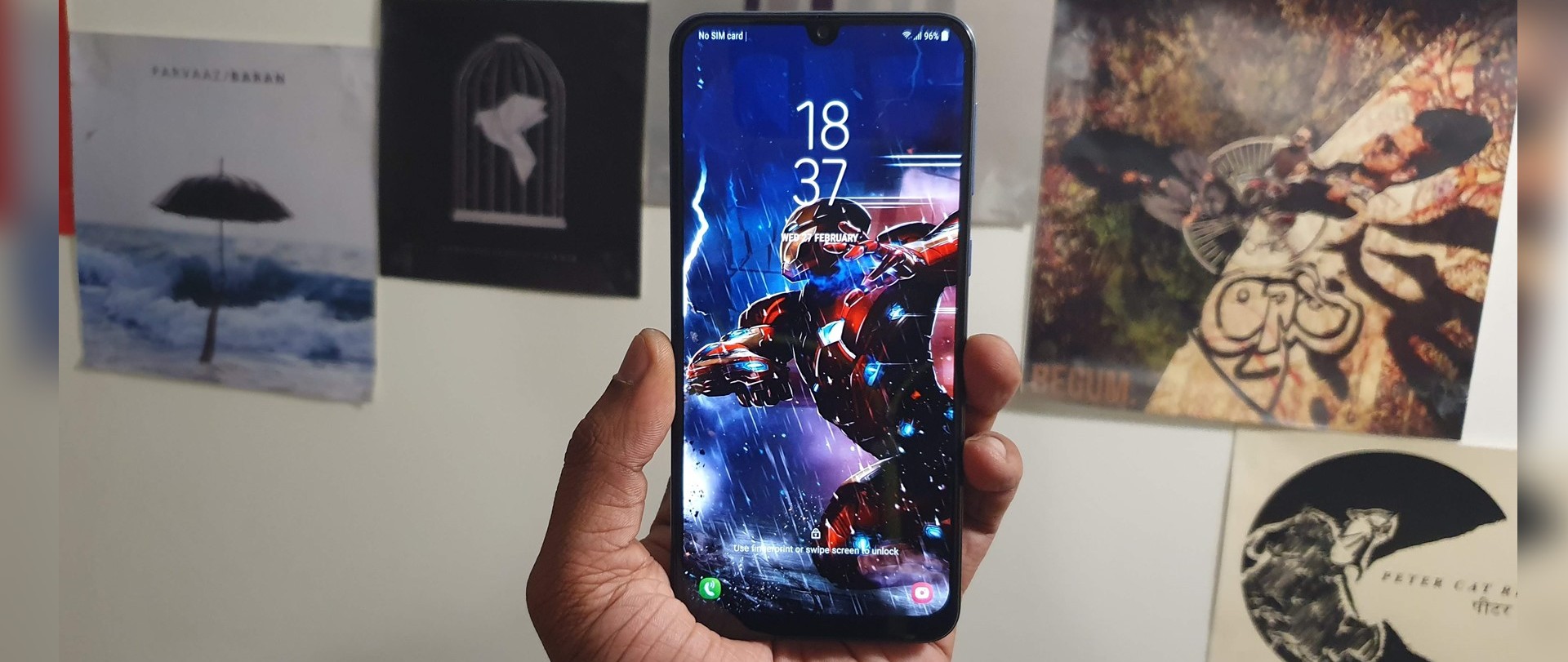Why you can trust TechRadar
Performance
Samsung Galaxy M30 is powered by Exynos 7904 chipset which is the same one found on the M20. It’s an octa-core CPU utilizing two Cortex-A73 clusters clocked at 1.8GHz for power-hungry tasks and six Cortex-A53 cores clocked at 1.6GHz for power-efficiency. There’s Mali-G71 MP2 as the graphics processor on the M30.
This is paired either with 4GB of RAM and 64GB internal storage or 6GB RAM and 128GB storage.
With that configuration, the performance of the M30 has been decent. On moderate use, the Exynos 7904 is able to power the phone through various tasks however, it has its limits so you cannot expect great multitasking. The Mali-G71 MP2 also lacks firepower for titles like PUBG Mobile which run on medium settings. Anything above that, and you’re looking at stutters and frame drops during gameplay. A definite no-no for gamers.
For regular users, the M30 will not disappoint if your usage revolves around apps like Facebook, Twitter, Instagram, WhatsApp, YouTube among others. Add a bit of casual gaming into the mix and you’re looking at a decent media consumption device.

As far as the benchmark scores go, the Galaxy M30 was able to fetch 107323 points on Antutu which is similar to the score of its younger sibling, the M20. Geekbench awarded it 1323 points on single core and 4156 points on multi-core tests. This is in line to our benchmarks that we obtained from the Galaxy M20 thereby corroborating the fact that both the M20 and M30 are similar in performance.
The M30 has the Samsung Experience 9.5 UI based on Android 8.1.0 and we have had our fair share of encounter with this UI on the Galaxy M10 and Galaxy M20. While it’s not the best or the latest experience on a smartphone in this range, Samsung’s optimizations keep the show running without hiccups. A couple of downsides with the Experience UI is that it is based on Android 8.1 when the competition is up and running on Android 9.0 Pie. Moreover, Samsung continues to provide third-party apps like Dailyhunt, Microsoft Apps suite, Amazon India along with some Samsung essential apps. Some of these apps can be uninstalled with the exception of Microsoft and Samsung apps.
On the lockscreen, Glance displays a magazine style news cards curated from different publications. At times, these lockscreen stories can prove to be a bit distracting and thankfully there’s an option in the settings menu to do just that.
Sign up for breaking news, reviews, opinion, top tech deals, and more.
Overall, the M30 is a balanced performer except for some caveats here and there but there are better performing phones out there in the market, especially for gamers.
Battery
Samsung has outfitted the Galaxy M30 with a 5,000mAh battery which also supports fast charging via the 15w adapter provided in-the-box.
In our time with the M30, it took 3 hours for the phone to charge from 0% to 100% using the fast charging adapter. Having a bigger battery makes for extended sustainability and in the case of M30, it is very beneficial.
The M30 manages to last for two days on a single charge when used moderately. Naturally, on heavy use which includes playing games or watching videos for a long duration, the M30 may not last for the entire day. Having said that, it’s generally not the case with the majority of users.
Verdict
The Galaxy M30 offers a bump up in the screen and camera departments from the Galaxy M20. We love the display on the M30, it is capable of providing a great viewing experience. The battery lasts long and you don’t have to worry about charging your phone daily anymore if you’re an average user.
At a starting price of Rs 14,990, the M30 lands in a spot that’s dominated by Xiaomi’s Redmi Note 7 Pro and frankly, the latter is a better choice to go for. However, the AMOLED display and a humongous 5,000mAh battery make it a perfect deal for users who consume a lot of content on their phones.
- Also Read: Samsung Galaxy M20 review | Samsung Galaxy M10 review
- 1
- 2
Current page: Performance, Battery life and Verdict
Prev Page Introduction, Design, Display and Camera
- Siddharth Chauhan is the Consumer Technology Reporter at Digit India. He used to work as an Assistant Editor at TechRadar India
